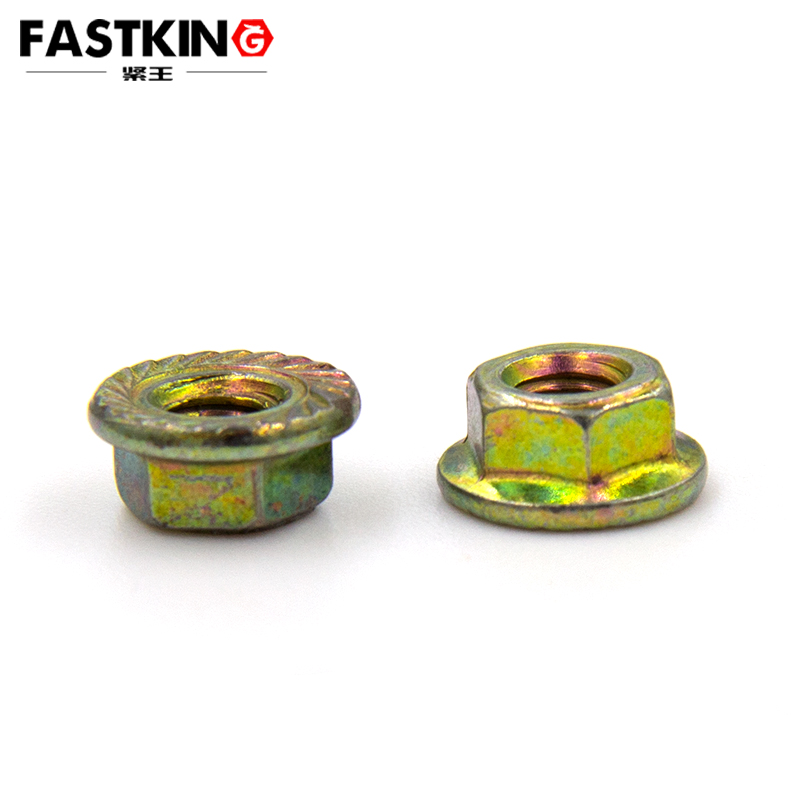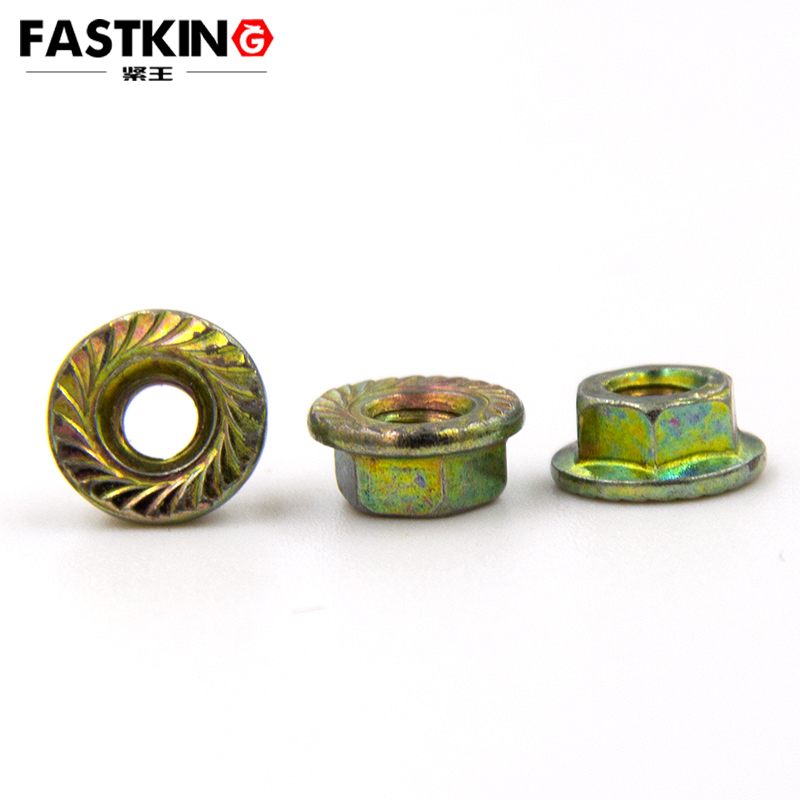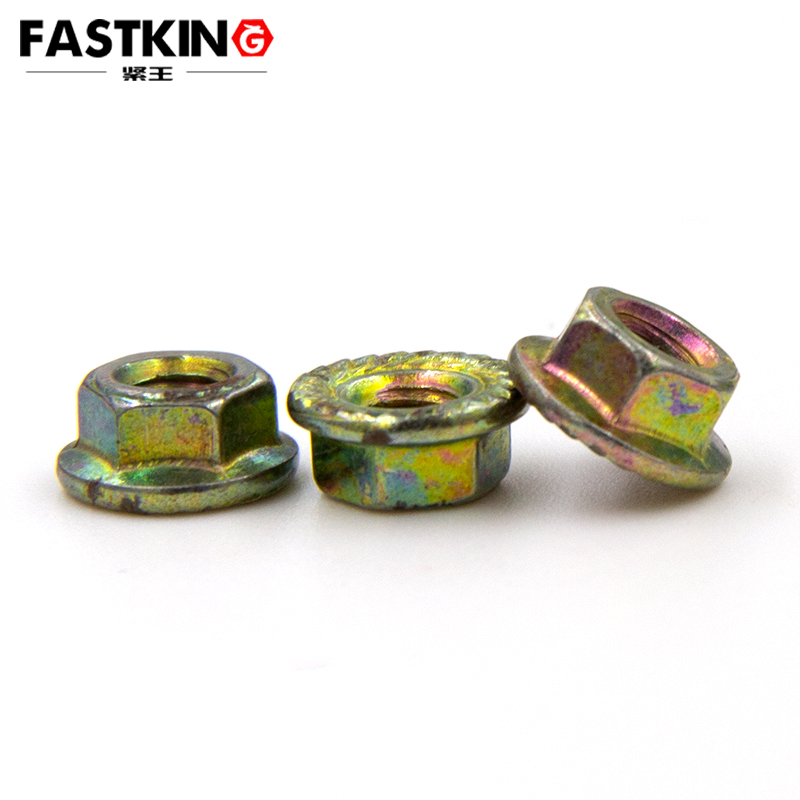
Structural Features of Colored Zinc Hex Flange Nuts
The colored zinc hex flange nut features a hexagonal head design, facilitating installation and removal using conventional tools. Its most notable characteristic is the integrally formed flange at the base, which not only increases the load-bearing area but also effectively distributes pressure at the connection points. The nut's surface undergoes a colored zinc treatment, forming a dense protective film that provides excellent corrosion resistance. This surface treatment gives the nut a unique iridescent sheen, combining aesthetics with practicality.
Application Scenarios of Colored Zinc Hex Flange Nuts
In the field of construction engineering, colored zinc hex flange nuts are widely used in steel structure connections. For instance, at the steel beam connections in high-rise buildings, these nuts ensure the stability of the connection points, with the flange design effectively preventing loosening. In bridge engineering, the corrosion resistance provided by the colored zinc treatment allows the nuts to withstand harsh environmental conditions, ensuring structural safety.
Mechanical equipment assembly is another important application area. During the assembly of heavy machinery, colored zinc hex flange nuts can endure intense vibrations and impacts. For example, at the hydraulic system connections of construction machinery, these nuts can effectively prevent loosening caused by vibrations, ensuring smooth equipment operation.

In the automotive manufacturing industry, colored zinc hex flange nuts are used for connections in critical areas such as engines and chassis. Their anti-loosening performance and corrosion resistance meet the demanding requirements of automotive use under complex conditions. Particularly in the fixation of battery packs in new energy vehicles, these nuts ensure the stability of the battery packs during vehicle operation.
Proper Usage of Colored Zinc Hex Flange Nuts
When installing colored zinc hex flange nuts, it is essential to ensure that the connecting surfaces are clean and flat. Use appropriate wrench tools and tighten according to the specified torque values. Over-tightening can damage the threads, while insufficient torque can affect the connection's effectiveness. For critical connection points, it is recommended to use a torque wrench for precise control.
In terms of maintenance, regular inspection of the nut's tightness is crucial. In harsh environments, increase the inspection frequency accordingly. If the nut's surface coating is damaged, timely rust prevention treatment or replacement is necessary. When disassembling, use appropriate tools to avoid damaging the nuts and connectors.

Safety precautions should not be overlooked. When used in high-pressure or high-temperature environments, ensure that the nut's material and strength grade meet the requirements. For connections subjected to alternating loads, it is advisable to use anti-loosening washers. In flammable and explosive environments, take care to prevent sparks during tightening operations.
With their unique structure and excellent performance, colored zinc hex flange nuts have become indispensable fasteners in modern industry. Proper selection and use of these nuts not only ensure connection reliability but also extend the service life of equipment. As material science and manufacturing processes advance, colored zinc hex flange nuts will undoubtedly play a more significant role in various fields, providing more reliable connection solutions for industrial production and engineering construction.
